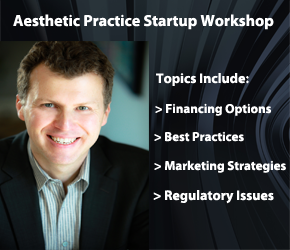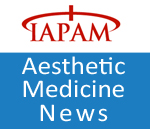The “Lipstick Effect” in Aesthetic Medicine: The 2008 ASAPS statistics support the notion that in tough economic times, small aesthetic luxuries are in demand
The American Society for Aesthetic Plastic Surgery’s (ASAPS) recently released report, 2008 Statistics on Cosmetic Surgery, outlines that 8,491,861 non-surgical procedures were done in 2008. However, this is a reduction of 11.7% over last year, and interestingly the only three growth non-surgical procedures were Calcium hydroxylapatite (Radiance) injections which was up 3%, chemical peels which were up 2.9% and laser skin resurfacing which had increased by 12%.
Jeff Russell, Executive Director of the International Association for Physicians in Aesthetic Medicine (IAPAM) comments that, “it is expected to see a downward trend in non-surgical procedures because many of these procedures are not being done in a plastic surgeon’s offices. These statistics are compiled from a survey of members of the ASAPS, however, many of these offerings are being preformed by professionals outside the membership of the ASAPS.” Russell further reminds us that , “not all these procedures are being performed by physicians. Since the public can get many of these procedures in both medical spas and physicians’ offices, and some of these treatments like mircodermabrasion and chemical peels may be delivered by non-medical professionals in a non-ASAPS member medical spa.” Indeed, the ASAPS supports this analysis. Among the 894 Board Certified physicians surveyed, the ASAPS found that “over fifty-three percent of cosmetic procedures in 2008 were performed in office-based facilities; 26 percent in freestanding surgicenters; and 19 percent in hospitals,” states the 2008 ASAPS report.
However, it is clear that the economy is having an impact on the aesthetic medicine industry: its the “Lipstick Effect” in Aesthetic Medicine, a phrase coined by Leonard Lauder, Chairman of Estee Lauder, who saw a huge jump in lipstick sales after September 11th. During times of economic uncertainty, consumers load up on affordable luxuries as a substitute for more expensive items. For physicians in Aesthetic Medicine, the lipstick effect manifests itself in patients choosing laser lipolysis over surgical liposuction or dermal fillers over face lifts.
So the news is encouraging for the non-invasive procedures industry. For example, while fourth quarter results for the sale of Allergen’s Botox Cosmetic® were down, full year 2008 Cosmetic® sales accounted for approximately 50 percent of total Botox® sales and grew at a rate of approximately 8 percent as compared to 2007.
Moreover, the ASAPS’s findings on the growth of chemical peels and laser resurfacing is very consistent with the direction of the industry as a whole. “Superficial chemical peels offer an excellent price point for the technician and immediate results, providing patients with greater value for their money. There is no need for additional equipment or large stocks of inventory; making chemical peels one of the most economical treatment options for aesthetic and medical practices,” reflects Danae Markland; Senior R&D Specialist, Advanced Educator, Licensed Aesthetician and CMLT. Equally, laser procedures (facial resurfacing, hair removal) can be profitably added to a practice with the lease of a basic IPL/Laser System, and then as the patient-base grows, the equipment and service offering can be enhanced through the addition of handpieces. This results in a procedural offering at a price point comparable to chemical peels and Botox applications.
Aesthetic non-invasive medical offerings represent the perfect storm between the current economy, medicine and profitability. Dr. Jason Pozner’s comments support this assertion. “Patients aged 35-50 continue to dominate [the cosmetic surgery market], having 45% of the cosmetic procedures, and most commonly getting liposuction and Botox. After the age of 51, the top procedures were blepharoplasty and Botox (32% of the total patient population). For the 19-34 set, the top procedures were breast augmentation and laser hair removal, and for everyone below 18, it was rhinoplasty and laser hair removal.” Even within cosmetic surgery practices, non-invasive procedures are more than competitive in all segments with cosmetic surgery offerings.
So, regardless of the economic outlook, the top five non-surgical procedures, as reported by the ASAPS for 2008: Botox, laser hair removal, hyaluronic acid dermal fillers, chemical peels or laser skin resurfacing, will continue to offer physicians in aesthetic medicine the best options for profitability in 2009. However, Jeff Russell reminds physicians and patients alike, “to ensure that all physicians and their assisting aesthetic practitioners be properly trained in the aesthetic procedures they perform. This training should include a combination of: didactic instruction, hands-on training, and CME testing.”
For a copy of the ASAPS 2008 Report, go to http://www.surgery.org/press/statistics-2008.php and for more information on the IAPAM’s educational programs or for information on the upcoming Aesthetic Medicine Symposiums in 2009, please contact Jeff Russell, Executive Director, IAPAM, at 1-800-219-5108 ext. 705, or visit http://www.aestheticmedicinesymposium.com .
![]()
About the Author (Author Profile)
Comments (4)
Links to this Post
- | Aesthetic Lasers | March 19, 2009
- Small Aesthetic Luxuries For Tough Times | Aesthetic Lasers | March 19, 2009
- News and Information about Todays Economy » The "Lipstick Effect" in Aesthetic Medicine: The 2008 ASAPS ..= . | March 20, 2009






I believe that advancements in laser technologies of the last couple of years may be the best thing that has happened to the aesthetic market. New lasers offer excellent results with minimal or no downtime at a price, which is becoming more and more affordable. My prediction is that chemical peels will gradually be replaced by mild laser skin resurfacing, which provides more controlled results with longer term rejuvenation effect.
For more info read our blog at http://www.LaserOffers.com.